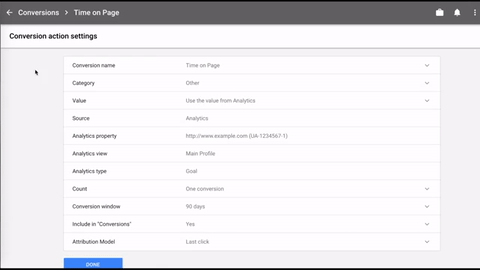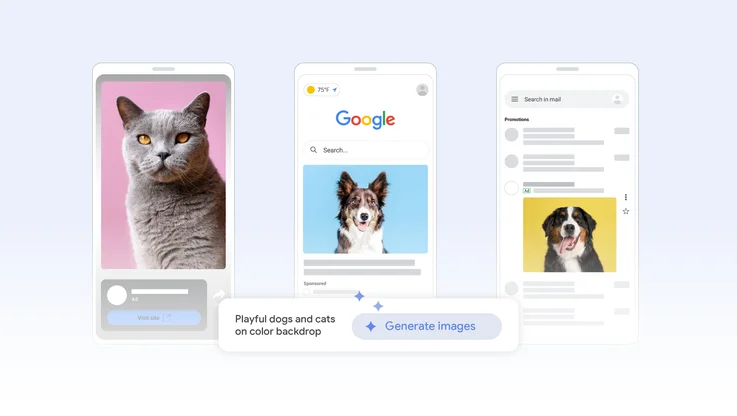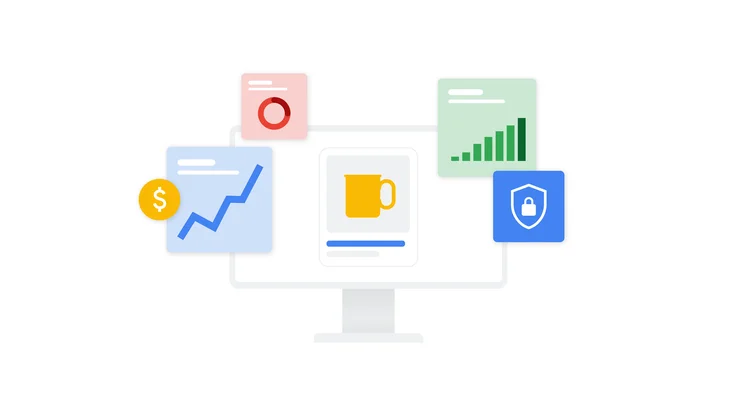Data-driven attribution delivers better results than last-click
The search process doesn’t start and end with “buy the exact product I already know I want.” People tend to click on multiple ads before converting. This process makes it challenging to assign the proper credit where it’s due. Last-click attribution, the default choice in AdWords, ignores everything except for the final, “buy the exact product I already know I want” ad click.
As marketers, it’s crucial to understand which of your clicks are the most impactful, whether or not they’re the last click before a conversion.
Data-driven attribution (DDA) uses Google’s machine learning technology to determine how much credit to assign to each click in the user journey. With DDA, you can understand how much credit should be assigned to the click on an ad for “features for product I think I want.” Even though it doesn’t convert immediately, you might see that people who click on that ad are much more likely to become customers later on.
DDA was introduced to AdWords back in May 2016, and since then, we’ve been studying how it affects performance. A recent analysis of hundreds of advertisers using DDA revealed that performance improved when compared to last-click attribution:
When compared to last-click attribution, DDA typically delivers more conversions at a similar cost-per-conversion
For Search, data-driven is now the recommended model for all eligible advertisers. It is a better way to measure and optimize performance.How data-driven attribution works
DDA is different from rules-based attribution models. It uses your account’s conversion data to calculate the actual contribution of each search ad click along the conversion path. By comparing the paths of customers who convert to those who don’t, DDA determines what truly matters for each conversion path.
As long as your account has enough clicks and conversions, you’re eligible for DDA. We automatically train a model that’s unique to each of your conversion types. The model observes what your customers do before converting, and what they do when they don’t convert, to measure what’s important. Using Google’s machine learning, the models continue to improve over time. Read more about DDA.
The benefits of knowing which clicks matter
Here’s how DDA has already created value for other companies:

Select Home Warranty, which provides warranties to homeowners for household repair projects in the United States, saw a 36% increase in leads and a 20% decrease in cost-per-conversion after making the change to DDA.
Switching to a data-driven attribution model unlocked growth for our business because it allowed us to give proper credit on mobile devices and non-brand keywords, resulting in a significant increase in overall conversions

Medpex is one of the largest mail-order pharmacies in Germany. Using Smart Bidding and data-driven attribution, they drove 29% more conversions while reducing cost-per-conversion by 28%.
An algorithm is better equipped than any manual optimization to react to dynamic changes such as price changes of competitors or delivery bottlenecks

H.I.S., a travel agency with global presence in over one hundred cities worldwide, combined DDA with Smart Bidding and Dynamic Search Ads to grow conversions by 62% at a constant cost-per-conversion.
Data-driven attribution helped us to acquire new users because we could strengthen our approach to users in the consideration phase
Updating your model
Making this change is straightforward. When you change your conversion action settings, use the dropdown in the Attribution Model section to select Data-driven as your attribution model:
Going forward, your “Conversions” column in AdWords will report your conversions based on the new DDA model. Smart Bidding will automatically adjust to this new way of measuring conversions. If you’re bidding manually, use the “current model” columns to make the initial set of adjustments. You can find these under the set of attribution columns.
Making the most of DDA
Updating your “Conversions” column is a big step, but there are a couple of other steps to ensure that your account sees the most potential improvement:
Adjust bids considering your new DDA-based conversions. Once you’ve updated your attribution model, your “Conversions” columns will begin to populate with stats that reflect your choice. From there it’s easy: Optimize your bids to account for the numbers in those columns. The recommended approach is to adopt an AdWords Smart Bidding strategy, like Target CPA or Target ROAS. Historical performance for that model can be found in the “current model” columns, which you should use as you make initial bid changes.
Give DDA some time. Those multiple clicks in a user’s conversion path take some time to happen. Give users a chance to convert or make a purchase before evaluating results. Once your account has settled into the new method, allow a couple of weeks to pass where you gather results.
Re-evaluate keywords that tend to be earlier in the click path. Last-click attribution could have favored some keywords at the expense of others. Now that you’re doing a better job measuring what matters, you may find that some campaigns make a big difference in the user journey. That difference may not have been measured appropriately in the past.
Stop reviewing assisted conversion metrics. In the coming months, we’ll be removing columns that reference assisted conversions from your statistics tables and reports.
Watch this video for more information about getting started with data-driven attribution. For more detailed guidance, including the steps to follow to properly test a new attribution model, check out our best practices for going beyond last-click attribution.
DDA is recommended for all Search ads, and we’re dedicated to improving DDA elsewhere. You can also take action on DDA if you use DoubleClick Search. In addition, DDA is also available in Google Analytics 360 and Attribution 360. We’ll continue to invest in DDA to make it even better across platforms.





